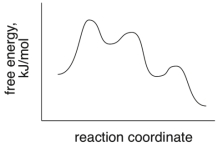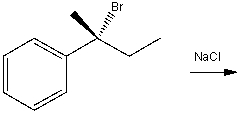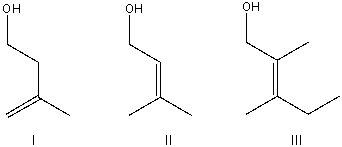A) I
B) II
C) III
D) IV
F) All of the above
Correct Answer

verified
Correct Answer
verified
Short Answer
Is the geometry of the following alkene -- E, Z, or neither? 
Correct Answer

verified
Correct Answer
verified
Essay
Draw the major product of the following reaction. 
Correct Answer

verified
Correct Answer
verified
Multiple Choice
Which of the following is the rate equation for the following SN2 reaction? ![Which of the following is the rate equation for the following S<sub>N</sub>2 reaction? A) Rate = k[1-bromopropane] B) Rate = k[NaCN] C) Rate = k[1-bromopropane] [NaCN] D) Rate = k[1-bromopropane]<sup>2</sup> E) Rate = k[1-bromopropane]<sup>2 </sup>[NaCN]<sup>2</sup>](https://d2lvgg3v3hfg70.cloudfront.net/TB4454/11ea894b_ac90_45be_bba7_8d20fe8b01be_TB4454_00_TB4454_00.jpg)
A) Rate = k[1-bromopropane]
B) Rate = k[NaCN]
C) Rate = k[1-bromopropane] [NaCN]
D) Rate = k[1-bromopropane]2
E) Rate = k[1-bromopropane]2 [NaCN]2
G) A) and B)
Correct Answer

verified
Correct Answer
verified
Essay
What is (are) the most likely product(s) for the following reaction? 
Correct Answer

verified
Correct Answer
verified
Multiple Choice
What is the correct structure for 2-bromo-3-methylbutane? 
A) I
B) II
C) III
D) IV
F) None of the above
Correct Answer

verified
Correct Answer
verified
Multiple Choice
What substitution reaction mechanism is most likely for the following compound? 
A) SN1
B) SN2
C) Either SN1 or SN2
D) None of these
F) C) and D)
Correct Answer

verified
Correct Answer
verified
Essay
Draw the major product of the following reaction. 
Correct Answer

verified
Correct Answer
verified
Short Answer
Based upon the following energy diagram, is this reaction an E1 or an E2 elimination? 
Correct Answer

verified
Correct Answer
verified
Essay
Provide a curved arrow mechanism for the following SN2 reaction. 
Correct Answer

verified
Correct Answer
verified
Essay
Predict the product(s) for the following SN1 reaction. 
Correct Answer

verified
Correct Answer
verified
Multiple Choice
Which of the following is the most reactive in an E2 reaction? 
A) I
B) II
C) III
D) None of the above
F) A) and C)
Correct Answer

verified
Correct Answer
verified
Multiple Choice
What would be the best base for performing the following elimination? 
A) KOCH3
B) KOCH(CH3) 2
C) KOC(CH3) 3
D) this reaction is not an elimination reaction
F) A) and C)
Correct Answer

verified
Correct Answer
verified
Multiple Choice
What substitution reaction mechanism is most likely for the following conversion? 
A) SN1
B) SN2
C) Either SN1 or SN2
D) None of these
F) None of the above
Correct Answer

verified
Correct Answer
verified
Essay
Draw the mechanism for the following dehydration. 
Correct Answer

verified
Correct Answer
verified
Essay
What is (are) the most likely product(s) for the following reaction? 
Correct Answer

verified
Correct Answer
verified
Multiple Choice
What set of reaction conditions would favor an SN2 reaction on 2-bromo-3-methylbutane?
A) weak nucleophile in a protic solvent
B) weak nucleophile in an aprotic solvent
C) strong nucleophile in a protic solvent
D) strong nucleophile in an aprotic solvent
F) A) and D)
Correct Answer

verified
Correct Answer
verified
Short Answer
Rank the following from most to least stable. 
Correct Answer

verified
Correct Answer
verified
Multiple Choice
Which of the following is the major product of the following elimination? 
A) I
B) II
C) III
D) None of the above
F) B) and C)
Correct Answer

verified
Correct Answer
verified
Essay
What is (are) the most likely product(s) for the following reaction? 
Correct Answer

verified
Correct Answer
verified
Showing 101 - 120 of 224
Related Exams